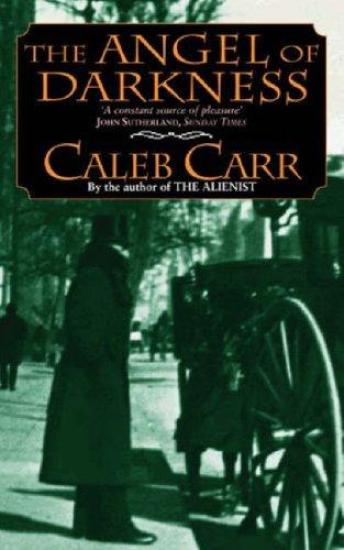
Series: Book 1 in the Novels series
Rating: Not rated
Tags: EN-Thrillers, Lang:en
Summary
Boyd Gaines skillfully delivers a wide range of voices and
characterizations in narrating this potboiler (LJ 10/15/97),
the sequel to Carr's The Alienist. The time is June 1897. The
place is New York City. The story is narrated by 13-year-old,
streetwise Stevie Taggart, who is a member of a team of
detecting irregulars. The kidnapping of an 18-month-old child
sets the story in motion. The ongoing investigation uncovers
a sociopath named Libby Hatch, who is a suspect in the deaths
of a frightening number of children, including her own. Using
the relatively new fields of forensics and psychoanalysis,
and calling on the assistance of some well-known "names"
(Teddy Roosevelt, Franz Boaz, Cornelius Vanderbuilt), the
team runs Libby Hatch to earth. But where is the child she
recently abducted? The clever zigzags of this thriller
finally answer this question. Well recommended.?Joanna
Burkhardt, Univ. of Rhode Island Sch. of Continuing
Education, Providence
An absorbing if overlong sequel to Carr's popular 1994
thriller, The Alienist. As in that novel, the figures of
alienist'' (i.e., psychologist) Dr. Laszlo Kreizler,
investigative journalist John Schuyler Moore, and Kreizler's
assistant Stevie
From Library Journal
Copyright 1997 Reed Business Information, Inc.From Kirkus Reviews
Stevepipe'' Taggert (who tells the story) figure
prominently in the investigation of a peculiarly dastardly
crime. The year is 1897, and Carr's plot is initiated by the
kidnapping of a Spanish diplomat's baby--then thickens, quite
pleasurably, as suspicion falls on Elspeth Hunter, a
malevolent nurse who is actually Libby Hatch, a malevolent
gang moll and the suspected murderess of her own children.
The pursuit, capture, and attempted conviction of Libby
involve such notable historical figures as painter Albert
Pinkham Ryder, women's-rights crusader Elizabeth Cady
Stanton, Libby's defense attorney Clarence Darrow (who
dominates a fascinating extended courtroom scene), and (back
also from The Alienist) New York City Police Commissioner
Theodore Roosevelt, who commandeers the US Navy to aid in the
story's climactic pursuit. Carr overloads his tale with
digressive comments on ever-worsening political relations
between the US and Cuba (though one can argue such passages'
relevance to the novel's initial mystery), and disastrously
slows down the otherwise absorbing courtroom scenes by
including needless detailed summaries of cases of child
murder offered as precedents. But these are minor blemishes.
Carr has learned to plot since The Alienist, and this novel
usually moves at a satisfyingly rapid pace. The ambiance is
convincingly thick and period-flavorful, the murderous
details satisfyingly gruesome, and even the somewhat shaky
central ethical question--whethera woman's murdering
her own kids . . . could actually be looked at as her trying
to gain control over her life and her world''--is quite
convincingly presented. As for the nefarious
Libby--presented, with perfect appropriateness, only as
others see and hear her--she rivals Lydia Gwilt of Wilkie
Collins's Armadale as the pluperfect villainess, and the
centerpiece of an enormously entertaining and satisfying
reading experience. (Author tour) --
Copyright ©1997, Kirkus Associates, LP. All rights
reserved.